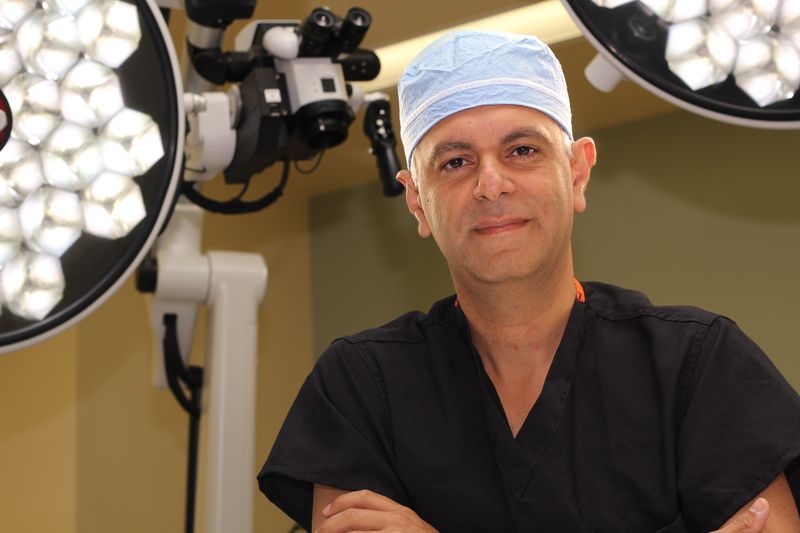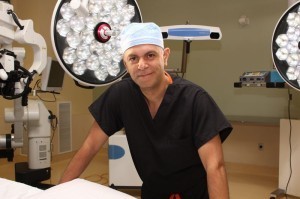 Spinal canal stenosis is one of the main causes of neck and back pain, which occurs when the spinal canal narrows and compresses the spinal cord. While often a result of aging, narrowing of the central spinal canal can cause mild to severe pain and uncomfortable symptoms, such as tingling, numbness, or muscle weakness, as well as urine or bowel incontinence and/or urgency.
Spinal canal stenosis is one of the main causes of neck and back pain, which occurs when the spinal canal narrows and compresses the spinal cord. While often a result of aging, narrowing of the central spinal canal can cause mild to severe pain and uncomfortable symptoms, such as tingling, numbness, or muscle weakness, as well as urine or bowel incontinence and/or urgency.
If you experience neck and/or back pain that interferes with your everyday life, it is important to get a comprehensive evaluation from an experienced orthopedic and neurological spine surgeon. The board-certified neuro and spine surgeons at ProMedSPINE specialize in performing the latest, most effective spine surgeries and therapies that help relieve pain and restore mobility. To learn more about ProMedSPINE and to schedule a consultation, please call us at 888-75-SPINE or contact us online.
Causes of Central Canal Stenosis
The spinal cord is protected within the spinal column and runs through a passageway called the spinal canal. The passageway or channel can become narrow and interfere with the spinal cord and nerve roots, resulting in painful or uncomfortable symptoms over time due to some of the following factors:
- Age-related degeneration, such as degenerative spinal stenosis or osteoarthritis
- Genetic condition called congenital stenosis
- Spinal tumor
- Traumatic spine injury
- Bone spurs
- Herniated disc
- Enlarged ligaments
Signs and Symptoms
In many cases, central spinal stenosis will go unnoticed because the condition does not progress far enough to impact the spinal cord. If you experience symptoms, it is important to receive a thorough, professional examination.
Lumbar Canal Stenosis
- Pain in the lower back
- Numbness or tingling in the low back, buttocks, and legs
- Neurogenic claudication – muscle cramps and weakness in the legs when walking or standing
Thoracic Spinal Canal Stenosis
- Pain in the mid-to-upper back
- Pain that radiates to the ribs, abdomen or internal organs
- Weakness, numbness, incontinence, and difficulty with balance
- Difficulty with hand function and dexterity
Cervical Spinal Canal Stenosis
- Neck pain
- Tingling or numbness that radiates to the shoulders, arms, and hands
- Cervical spondylotic myelopathy – weakness or spasticity in the legs and arms
 Treatment Options
Treatment Options
Depending on the severity of the symptoms, the first plan of action for treating central canal stenosis will involve one or a combination of conservative treatments and alternative therapies. This includes:
- Surgery
- Physical therapy
- Exercise
- Weight reduction
- Activity adjustments
- Hot/cold compress
- Acupuncture
- Chiropractic manipulation
- Anti-inflammatory medication
- Nerve blocks
- Steroid injections
Learn more about the different types of spinal stenosis by visiting Back.com.
If the patient’s symptoms are not alleviated by conservative or alternative treatments, minimally invasive surgery may be considered. The skilled neuro and spine specialists at ProMedSPINE utilize surgery as the last measure for spinal conditions in order to avoid unnecessary operations. However, surgical procedures that may provide relief from central spinal stenosis include:
- Anterior Cervical Discectomy and Fusion – If a spinal disc in the neck is damaged, it may be totally or partially removed, the canal is enlarged to relieve pressure on the nerves, and the vertebrae may be fused together for support. Instead of a spinal fusion, a damaged disc may be removed and replaced with an implant.
- Anterior Lumbar Interbody Fusion (ALIF) – The operation is performed through the abdomen, where damaged bone, cartilage or ligament is removed, and the vertebrae are fused together to provide support and stability, as well as relieving pressure on the spinal cord.
- Microscopic/Endoscopic Surgery – A microscopic camera is inserted through a small incision, allowing the surgeon to accurately remove specific portions of damaged spinal disc (discectomy) or bone and ligament (laminectomy).
- Interspinous Process Decompression – An implant is inserted to relieve pressure in the lumbar spine.
Contact ProMedSPINE in Los Angeles
The leading experts in minimally invasive spine surgery at ProMedSPINE utilize the most technologically advanced conservative and surgical techniques to treat painful, debilitating conditions affecting the spine.
To schedule your initial consultation and learn about your treatment options at ProMedSPINE, please call 888-75-SPINE.
Next, learn more about spinal stenosis.